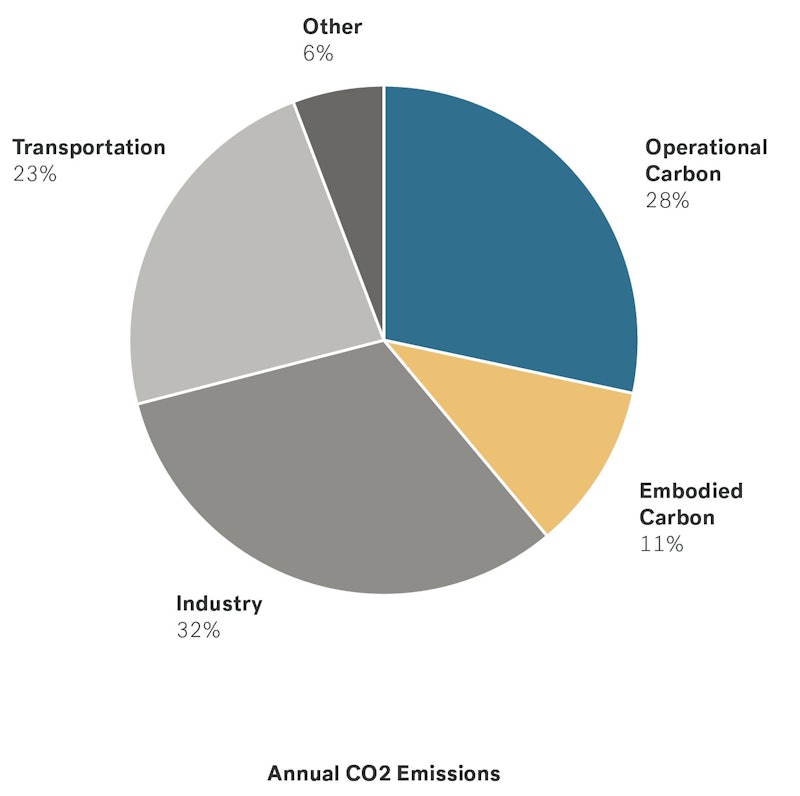
2019 | Paths to Carbon Zero | Kevin He and Kelsey Wotila
Aligned with the AIA Resolution on Climate Change, this research was centered around the question: what would it take to make a Zero Carbon building - operational and embodied carbon? 8 case studies and other relevant work taught us about both.
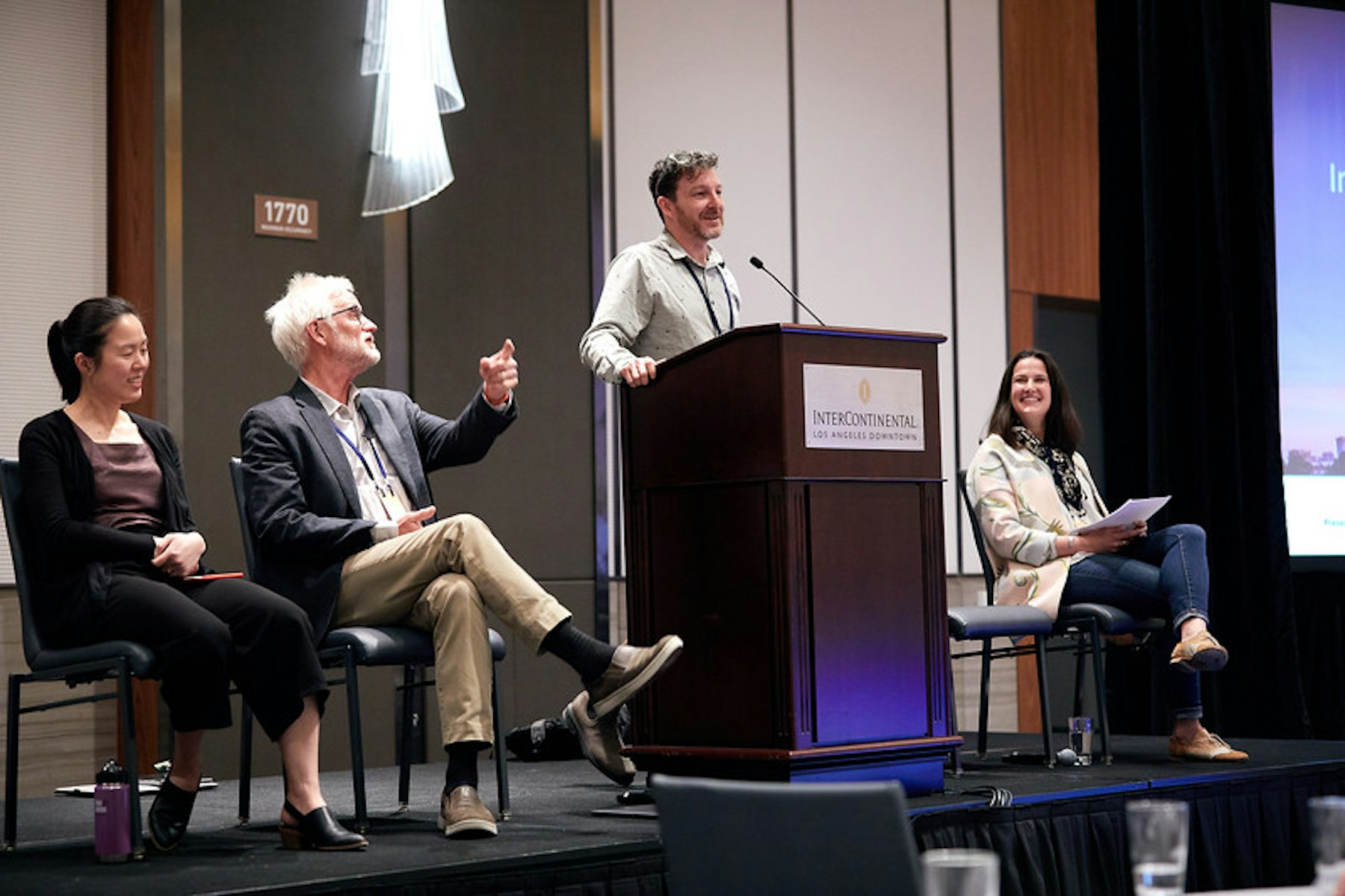
A year ago in March, our 2019/2020 research fellow, Kelsey Wotila, spoke at Carbon Positive, sharing some of her novel research in embodied carbon. It was a highlight of the Fellowship, and a jumping off point for EDR to share the work she and Kevin did throughout the year with our industry. Below is a summary of the research and analysis conducted over the course of a year. Much of this analysis has since become an embedded part of our design process. As the AIA is recognizing the need for urgent climate action, we aim to elevate our practice and technical, sustainable decision making by applying the findings and knowledge that came out of Paths to Carbon Zero. To read the case studies in full, please visit the link here.
40% of annual Greenhouse Gas Emissions are related to buildings. 40% can be broken down into Building Operations - or Operational Carbon - and Building Materials & Construction - Embodied Carbon. That means architects have a tremendous opportunity to make substantial impact through designing more energy and resource-efficient buildings. We know we can measure energy efficiency with energy models and measuring embodied carbon works in a similar way. Life Cycle Analysis (LCA) is the mechanism through which we can understand embodied carbon impacts of the buildings we design.
Below are descriptions of the phases of LCA, and further illustration of commonly included building components measured in LCA. Structure, Envelope and Interiors are typically included in LCA studies. A result of this Fellowship was finding data, carbon multipliers, and writing a Dynamo script to also measure embodied carbon associated with mechanical systems.
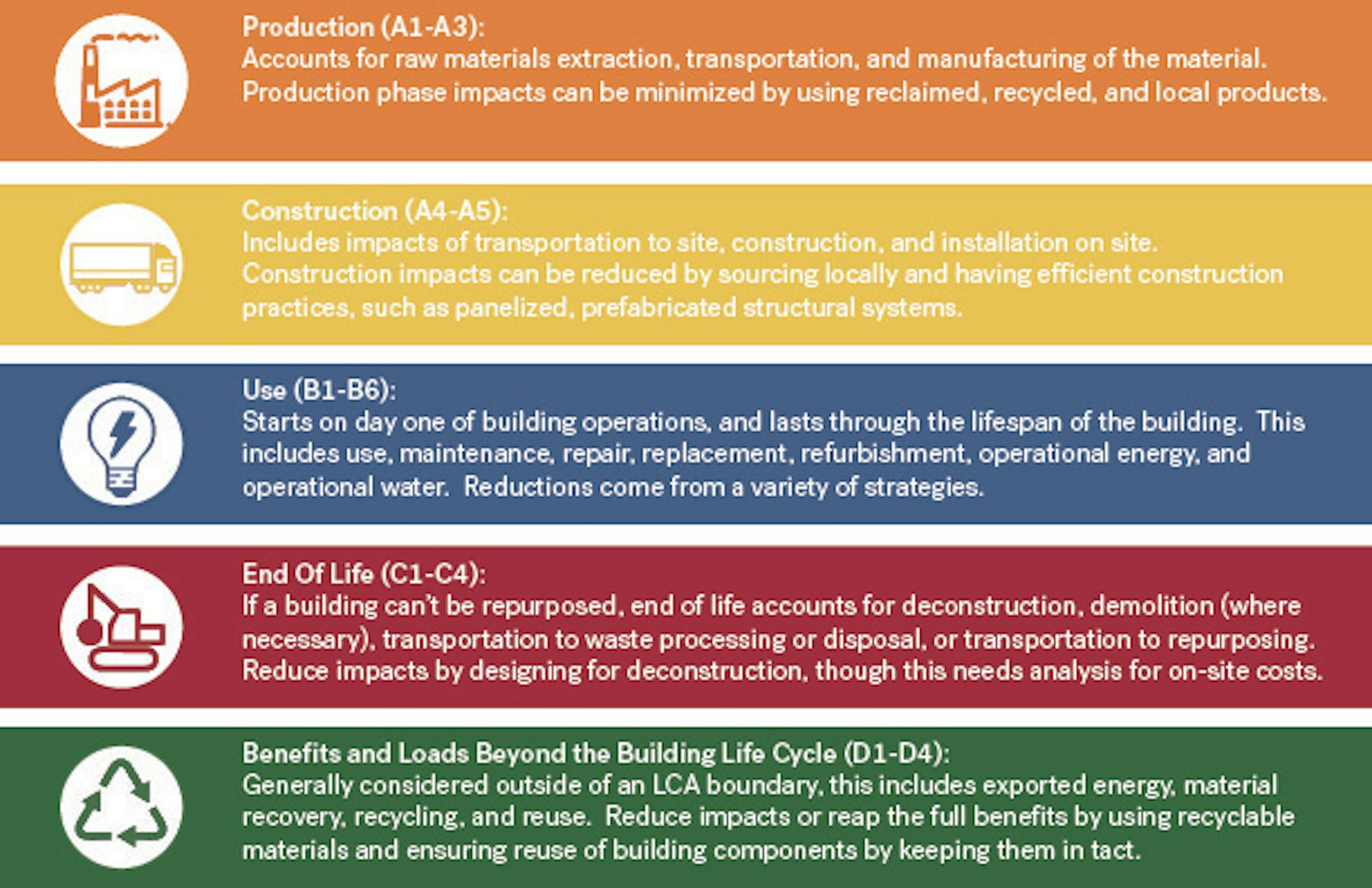
Whole-building Life-Cycle Analysis (LCA) is comprised of building structure (and superstructure), envelope, and or interior. LCAs should disclose what building elements they measure as well as what life-cycle stage. Understanding these basic parameters of LCA was critical in the Fellowship and in gaining knowledge for the firm to measure embodied carbon.
Upon studying LCA and carbon accounting, Kelsey and Kevin recognized the obvious gap of MEP systems in analysis. Working with local MEP Engineers and installers, researching material carbon multipliers, and creating a dynamo script to pull material quantities from BIM, they were able to measure the embodied carbon impacts of MEP systems.

For buildings constructed in 2020, operational carbon emissions should be reduced by 70% from the national average and aim for a 40% reduction in embodied carbon. Through a portfolio sample of eight projects, a case study approach measures if these targets are met, and how much it would cost to do so.
These studies revealed a few key takeaways. Operational carbon reductions of 70% are easily achievable and cost effective, across building types, and in varying climate regions. Embodied carbon reductions of 40% are much more difficult, but 10% reductions through structural optimization and mindful material choice are achievable at little to no cost premium.
Analysis of the embodied carbon of new construction underscores that structure dominates the conversation, and that wood structure offers particular promise to lower the carbon impact of construction. More work is being done to verify assumptions being made about building with wood. Look to the 2020/2021 Fellowship for more information on this topic.
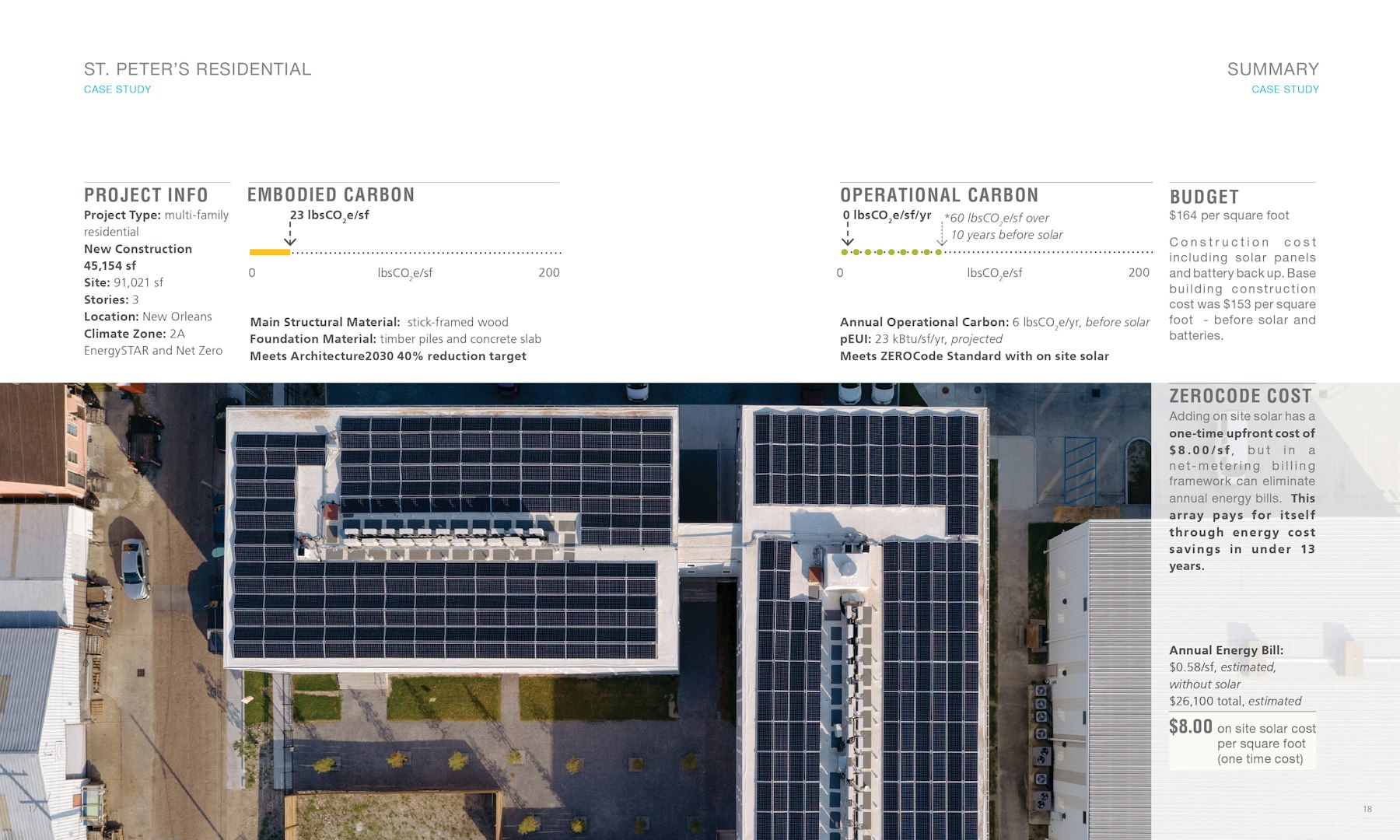
Below are embodied carbon outcomes from four studies, ranging in both structural and use type. Architecture 2030 sets a baseline for both energy reduction and embodied carbon reduction from baseline buildings, though 2030 doesn’t establish where to pull a baseline Embodied Carbon number from. For our studies, we used the Carbon Leadership Forum database, and made sure to compare analysis results both by structural type and building use type. From those baselines, we found it difficult to meet the target of 40% below baseline, and typical ranged more around 10-15% reductions in EC. We, like the rest of the industry, have to work harder for more optimal structural use. We recognize the importance of partnering with ASECC 2050 signatory firms who are aligned with our goals and sustainability values.
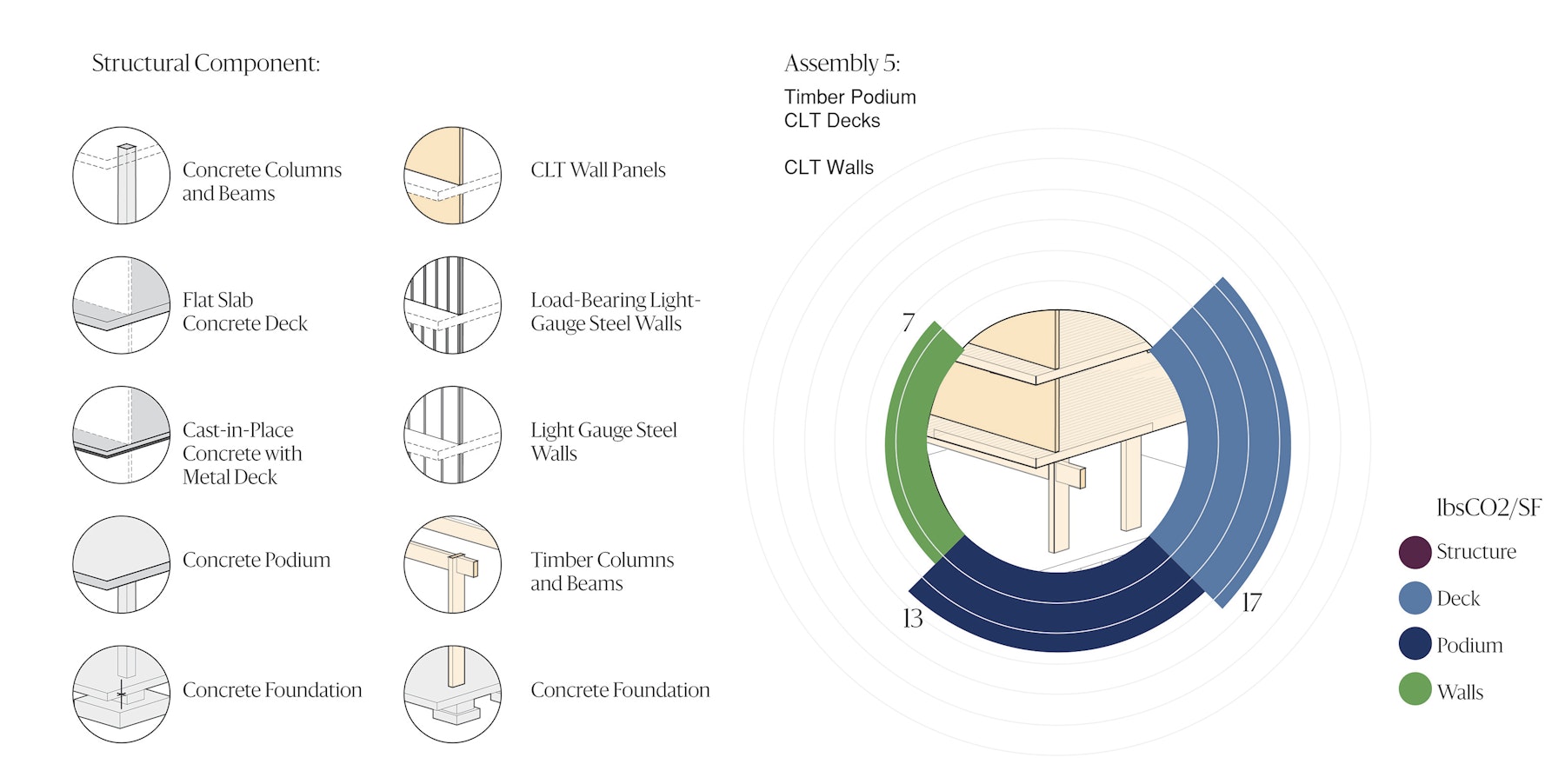
Structure is a high impact item due to material quantity through which we have designer power to optimize and reduce our impact. The first step in implementing these decisions is awareness. Establishing a simple reference guide for anyone on the project team to understand allows us to interpret and influence design decisions. Common structural assemblies are evaluated in this study, with the best option for low carbon displayed above. As wood is a highly debated topic for many reasons, our 2020-2021 research Fellowship is dedicated to that topic to better understand the connection between forestry practices, architectural design, and carbon impacts or consequences. Assumptions in these studies used Tally defaults including biogenic carbon.




